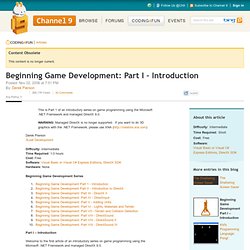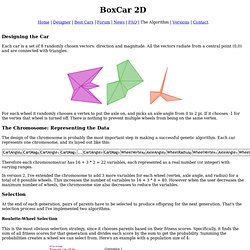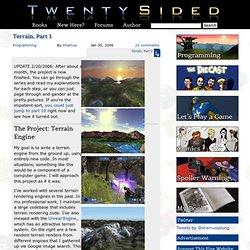

The four lenses of game making. [In this opinion piece originally posted on the What Games Are blog, and reprinted in full with his permission, UK-based game designer Tadhg Kelly breaks down the four lenses of game making, a "common set of assumptions and predispositions" he often sees in developers.]

For years it's been apparent that interpreting games and their makers through the opposed lenses of gameplay or story is inadequate. Such a one-dimensional spectrum breeds false oppositions (fun-or-art?) While either ignoring many games that don't fit or reinterpreting them so they fit badly. The spectrum is too reductive and, while it is easy to summarize, it leaves out too much context. Rather than talking about games in terms of two lenses, I use four (potentially five, but I'll come back to that).
CuteGod: A prototyping challenge. It is once again time for a prototyping challenge!

The rules are the same. You are an elite programmer that wants to make something fun without spending ten years in art school learning how to draw stick figures. CIS 300: Introduction to Computer Game Design. David Perry on Game Design: Game Conventions and Clichés. [GameCareerGuide is happy to present another excerpt from David Perry on Game Design: A Brainstorming Toolbox.

You may also be interested to read our our previous excerpts, on game scenarios and game worlds.] In this chapter, going to look at the things we do in various games, but this time with an eye toward the conventions and clichés that games have developed over the years. Beginning Game Development: Part I – Introduction. Part I – Introduction Welcome to the first article of an introductory series on game programming using the Microsoft .NET Framework and managed DirectX 9.0.

This series as aimed at beginning programmers who are interested in developing a game for their own use with the .NET Framework and DirectX. The goal of this series is to have fun creating a game and learn game development and DirectX along the way. Game programming and DirectX have their own terms and definitions that can be difficult to understand, but after awhile, you’ll crack the code and be able to explore a new world of possibilities. I will keep things as straightforward as possible and decode terms as they appear. Amit’s Game Programming Information. What’s on this page?

I’m interested in producing complexity out of simple parts. This page contains bookmarks that I collected while working on games; I did not write most of the content linked from here. As a result the set of links here reflects the types of things I needed to know: only a few specific topics (not everything related to game programming), general ideas instead of platform-specific information (graphics, sound, compilers), and ideas and designs instead of source code (I find it easier to go from an idea to code than from code to an idea). Other sites, like Gamedev Tuts+, Gamedev, and Gamasutra, cover lots more topics than mine does.
Video Game Development. BoxCar 2D. Designing the Car Each car is a set of 8 randomly chosen vectors: direction and magnitude.

All the vectors radiate from a central point (0,0) and are connected with triangles. For each wheel it randomly chooses a vertex to put the axle on, and picks an axle angle from 0 to 2 pi. If it chooses -1 for the vertex that wheel is turned off. There is nothing to prevent multiple wheels from being on the same vertex. The Chromosome: Representing the Data The design of the chromosome is probably the most important step in making a successful genetic algorithm.
Therefore each chromosome/car has 16 + 3 * 2 = 22 variables, each represented as a real number (or integer) with varying ranges. In version 2, I've extended the chromosome to add 3 more variables for each wheel (vertex, axle angle, and radius) for a total of 8 possible wheels. Selection At the end of each generation, pairs of parents have to be selected to produce offspring for the next generation. Roulette-Wheel Selection Tournament Selection. Terrain, Part 1. UPDATE 2/20/2006: After about a month, the project is now finished.

You can go through the series and read my explanations for each step, or you can just page through and gander at the pretty pictures. If you’re the impatient sort, you could just jump to part 10 right now and see how it turned out. The Project: Terrain Engine My goal is to write a terrain engine from the ground up, using entirely new code. In most situations, something like this would be a component of a computer game. I’ve worked with several terrain rendering engines in the past. Procedural City, Part 1: Introduction. Change of pace.

In the last week I’ve had an idea clawing at the back of my head, and it’s clear the thing isn’t going to leave me alone until I do something with it. I don’t usually blog about my little programming projects (with the exception of the Terrain Project) because I like to imagine this site has some sort of focus, but the choice here is for me to blog about this or leave the site fallow for a week. So I’m blogging it. Perhaps you’ll find it entertaining anyway. Motivation There are several reasons for wanting to do this.
The Mathematics of Games. Theory/Design. Game Design Theory. Game Theory.